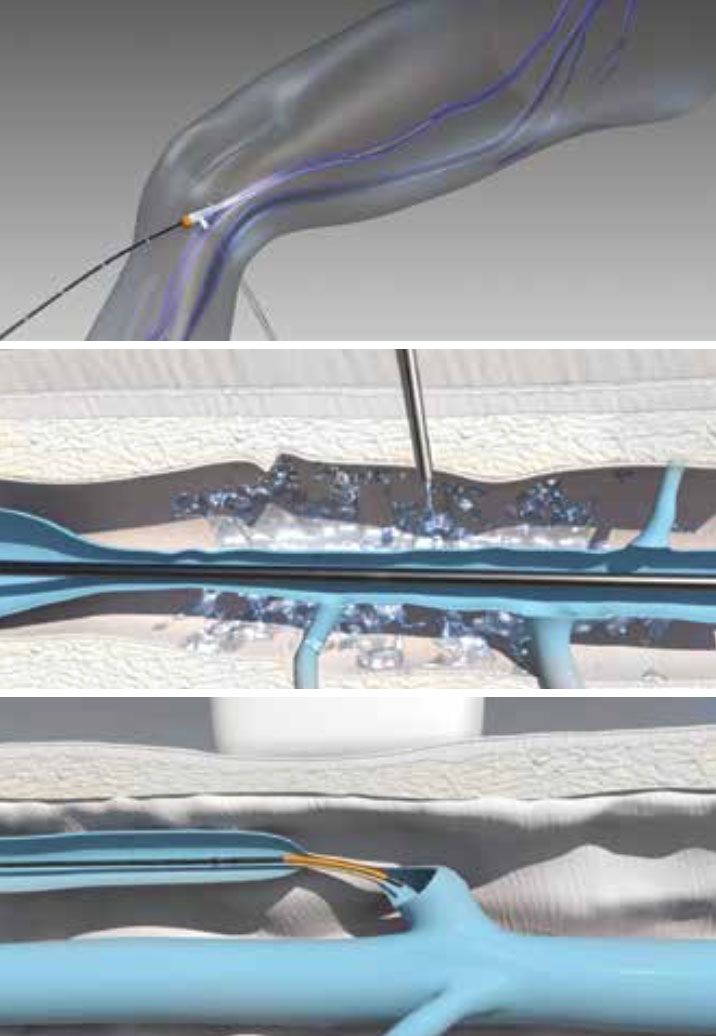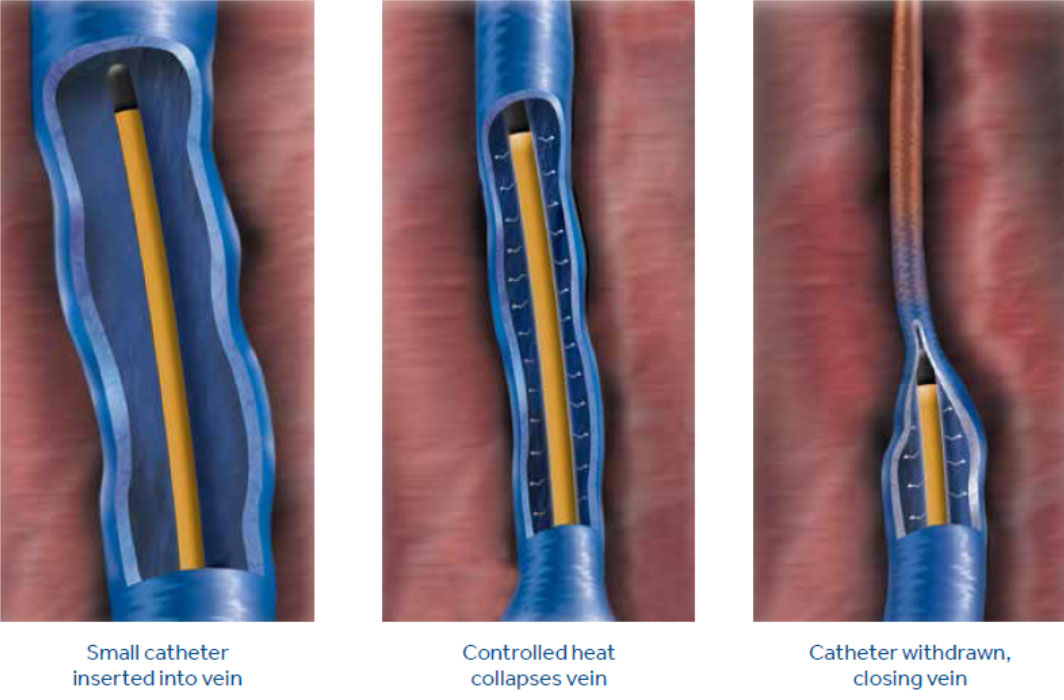Thermal ablation of varicose veins
What is Radiofrequency therapy?
Radiofrequency (RF) therapy is a minimally invasive alternative to traditional vein stripping. It’s done by inserting a very small tube called a catheter into the vein and delivering radiofrequency energy to the vein wall. This causes the vein to shrink, collapse and seal shut. Once it’s sealed, healthy veins take over. The radiofrequency procedure can be performed under local anesthesia. Patients have reported little, if any, pain during the procedure, and most return to normal activity within a day. Some common side effects include temporary tenderness and numbness. You can expect a noticeable improvement within 1 to 2 weeks, with good cosmetic outcomes and little to no scarring. The procedure is often supplemented by sclerotherapy to clear up any residual veins.
Procedure

ClosureFast procedure
Leg preparation
Prior to the ClosureFast procedure:
- Leg will be evaluated using ultrasound
- Vein may be marked using a skin marker
Vein access and catheter positioning
- Local anesthesia will be given at the catheter entry site to numb the area
- The physician will access the vein through either a small incision or skin puncture
- Once the veins is accessed, the ClosureFastTM catheter is inserted and advanced to the treatment starting point
- The catheter’s position is veri ed using ultrasound
Anesthesia
- Treatment path will be numbed with local, tumescent anesthesia
Procedure
